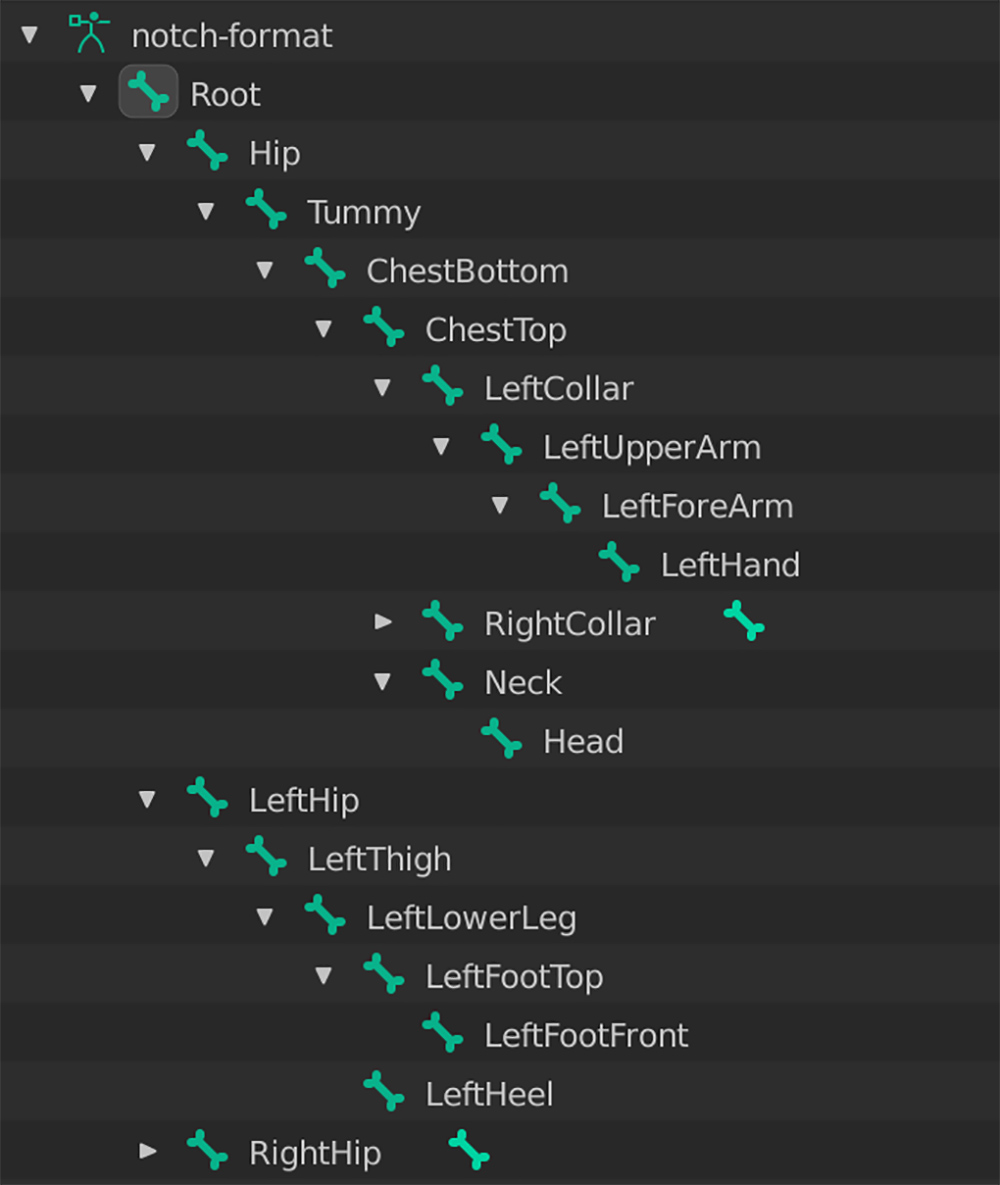Notch Skeleton
Skeleton is a biomechanical model of the human (or animal, robots ..). It is a tree-structured hierarchy of bones that originated from a single root bone. The default notch skeleton is composed of 23 bones.
The skeleton is needed for 2 reasons:
- During the steady measurement, the skeleton’s bone orientations are linked to the actual physical bone orientation of the user. That’s why it’s important to do the proper steady.
- In the Notch Visualizer, the skeleton is used to drive and animate the model
Each bone vector is defined as:
{
"name":"Tummy",
"parent_name":"Hip",
"mass_ratio":0.0,
"bone_vector":[
0.0,
0.194,
0.0
]
}
where:
- “name” is the name of the bone, for example: “RightUpperArm”;
- “parent_name” is the bone that it is linked to;
- “mass_ratio”, is set for 0 (update this if you would like to calculate the skeleton’s center of mass);
- “bone_vector”, which is [x,z,y] vector for the bone, originating at the endpoint of the parent bone, in meters.
So in our example, Tummy’s parent bone is the Hip, and it is located 0.194m above the Hip [z direction].
The Notch Skeleton originates from the “Root” bone and this is how the hieararcy is set up:
The complete notch skeleton can be found in the skeleton.js file, and it is included in each recording’s measumrement zip. To visually view the skeleton, export the motion into .bvh, unzip the folder, and import the notch_format.bvh into a 3D Engine, like Blender:

